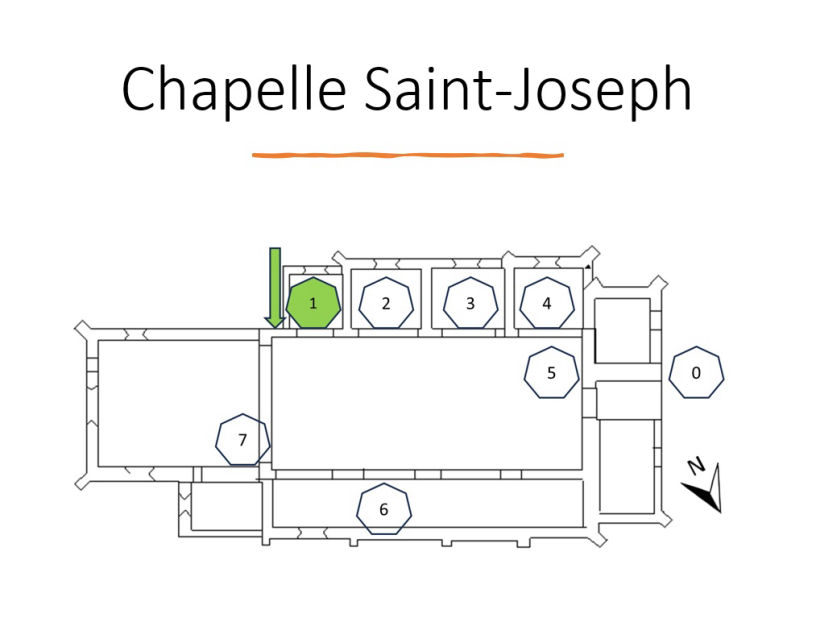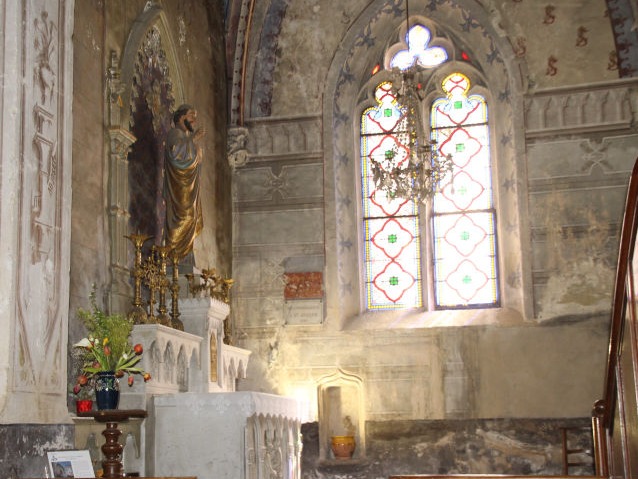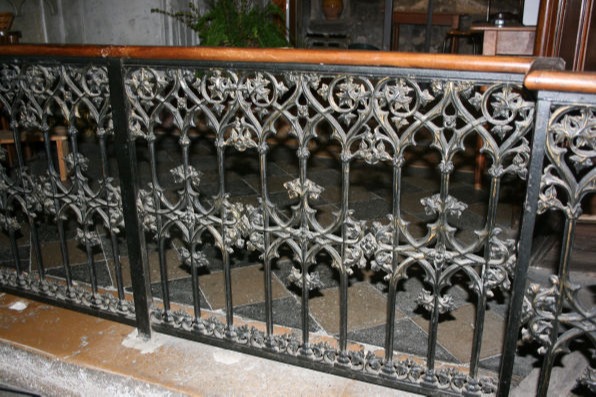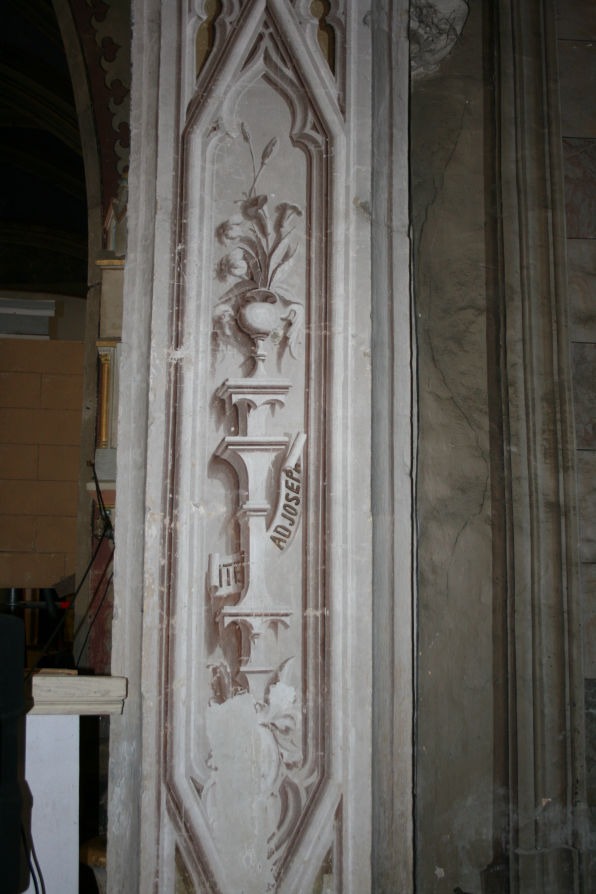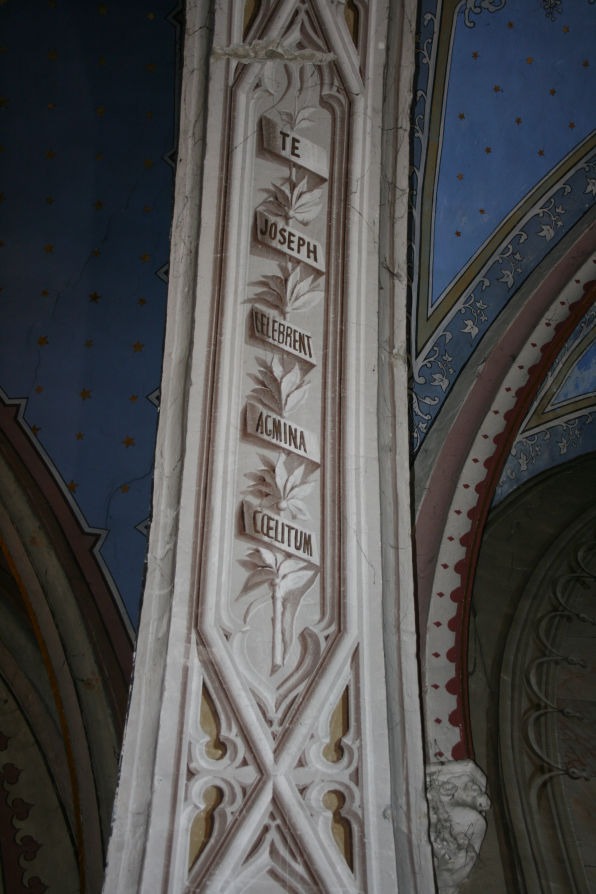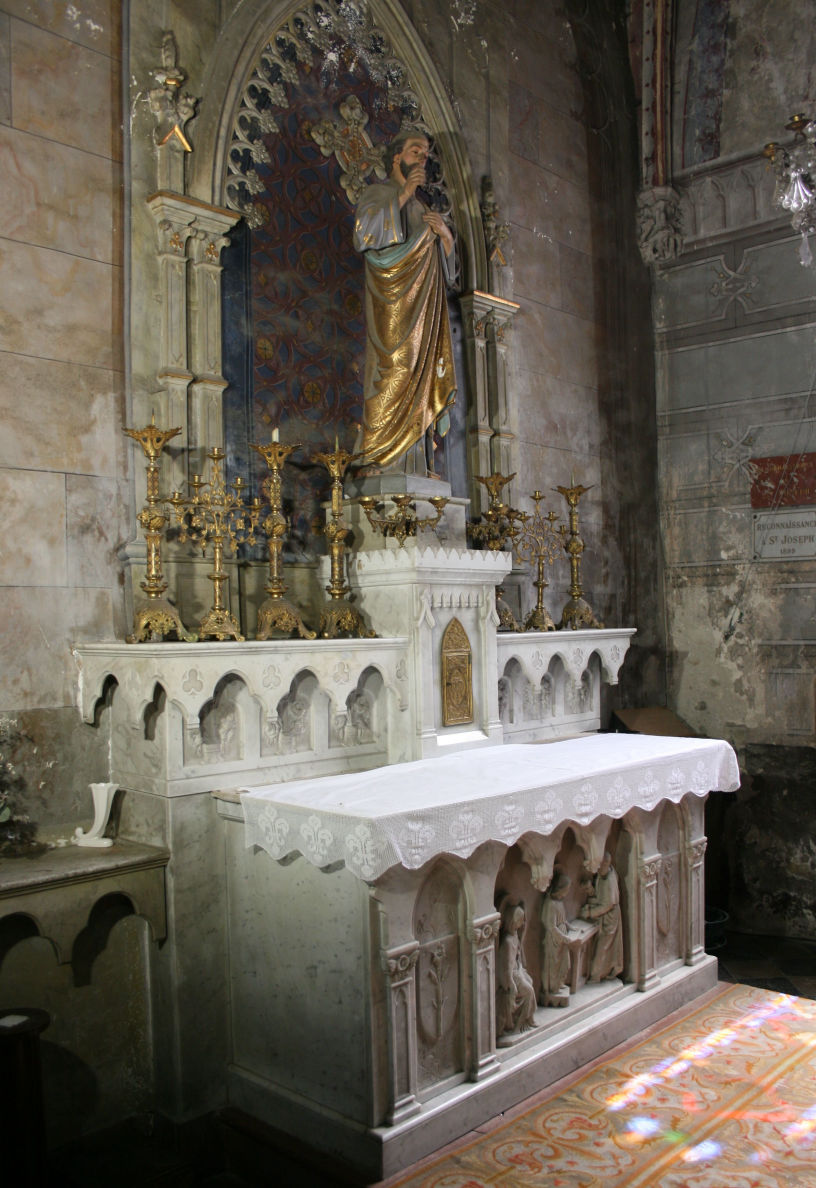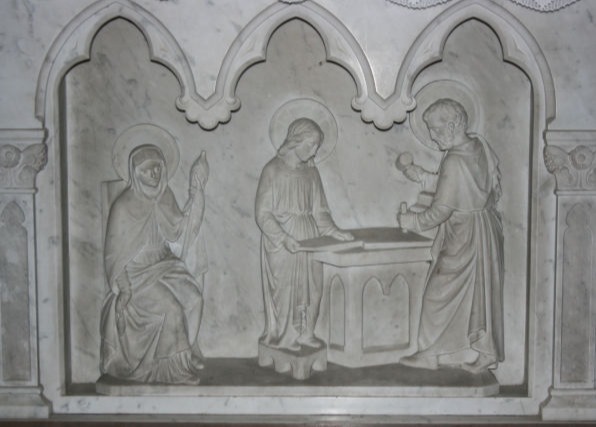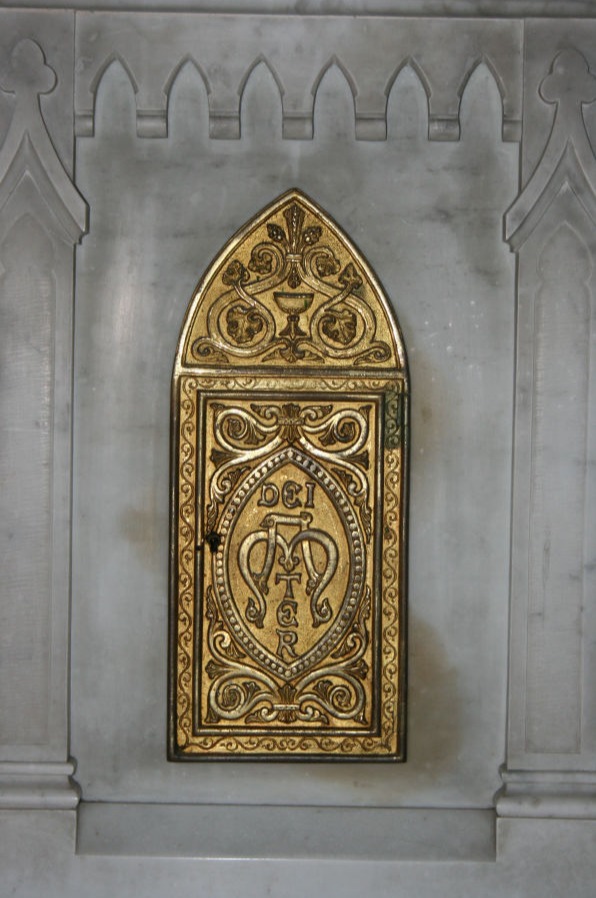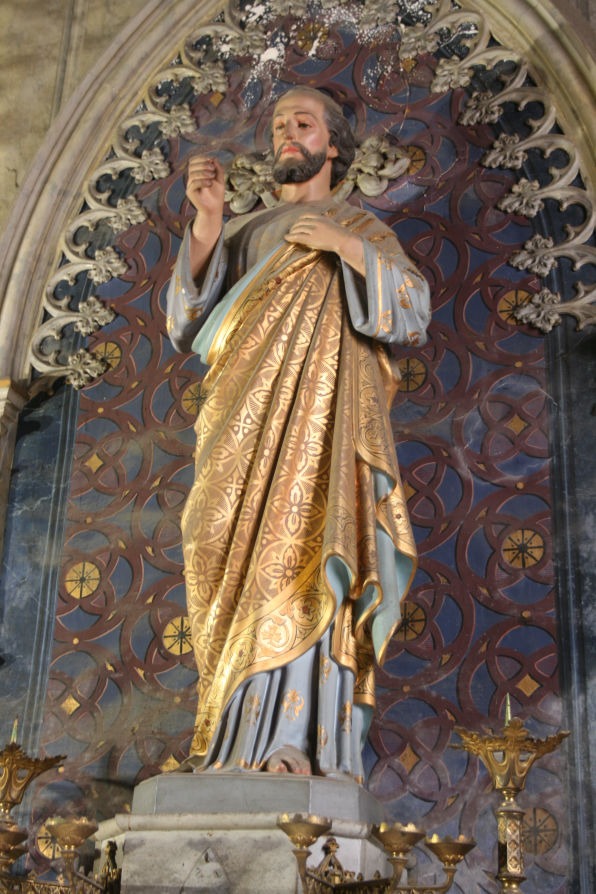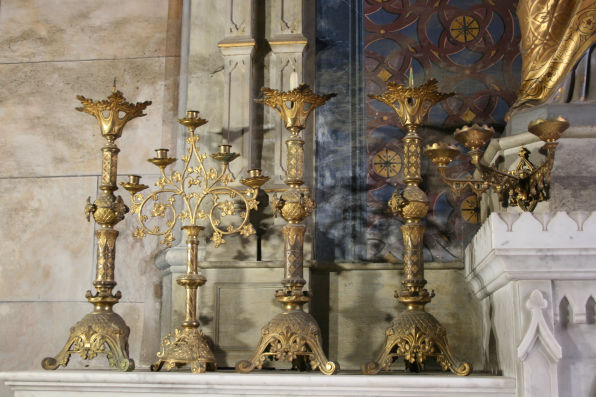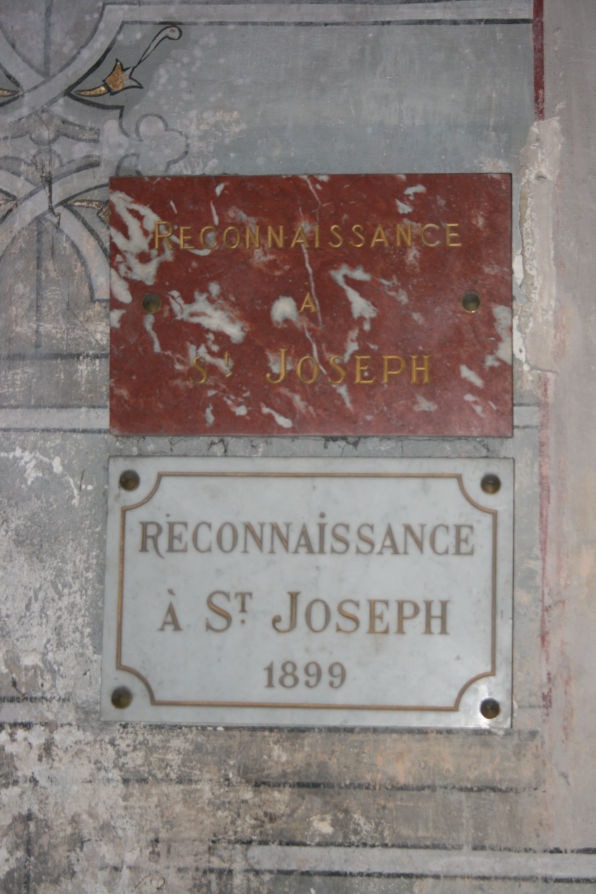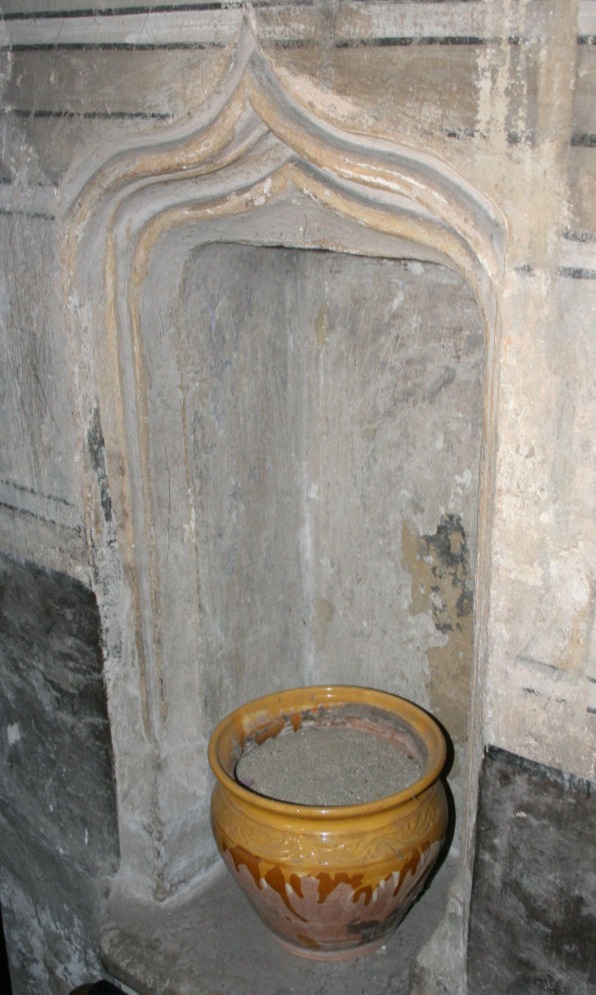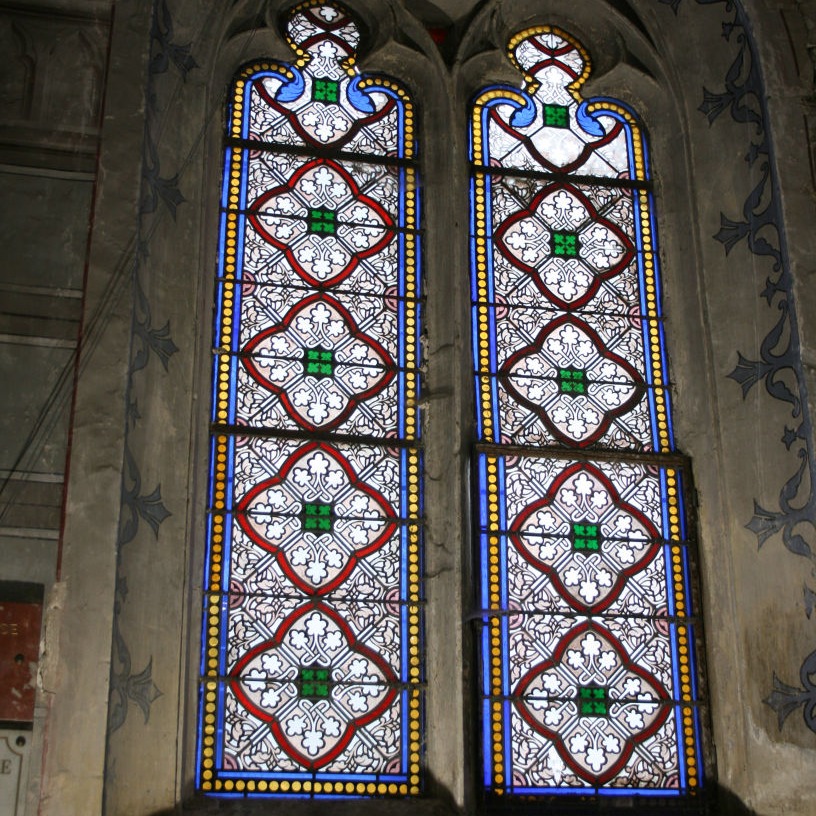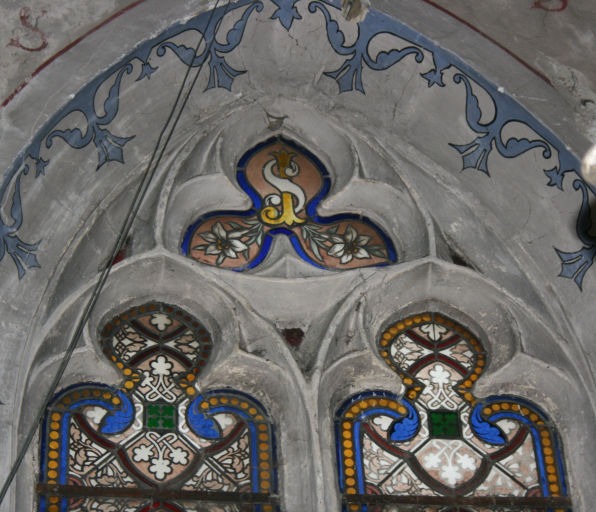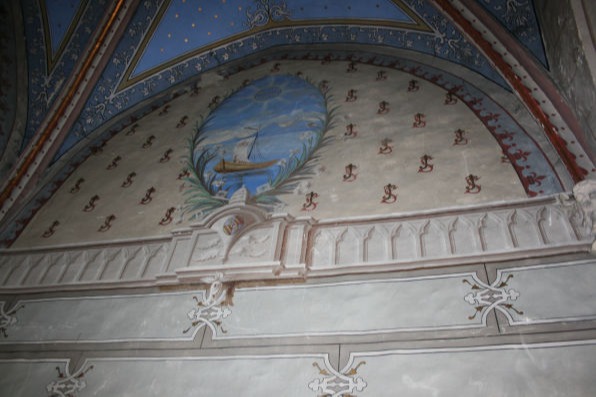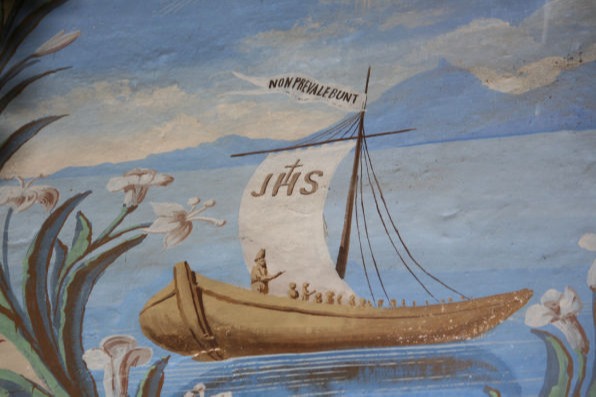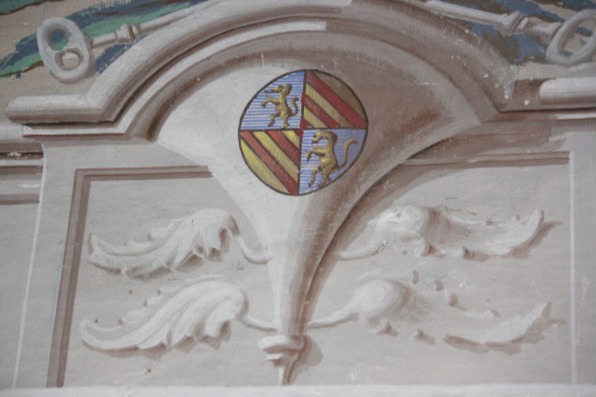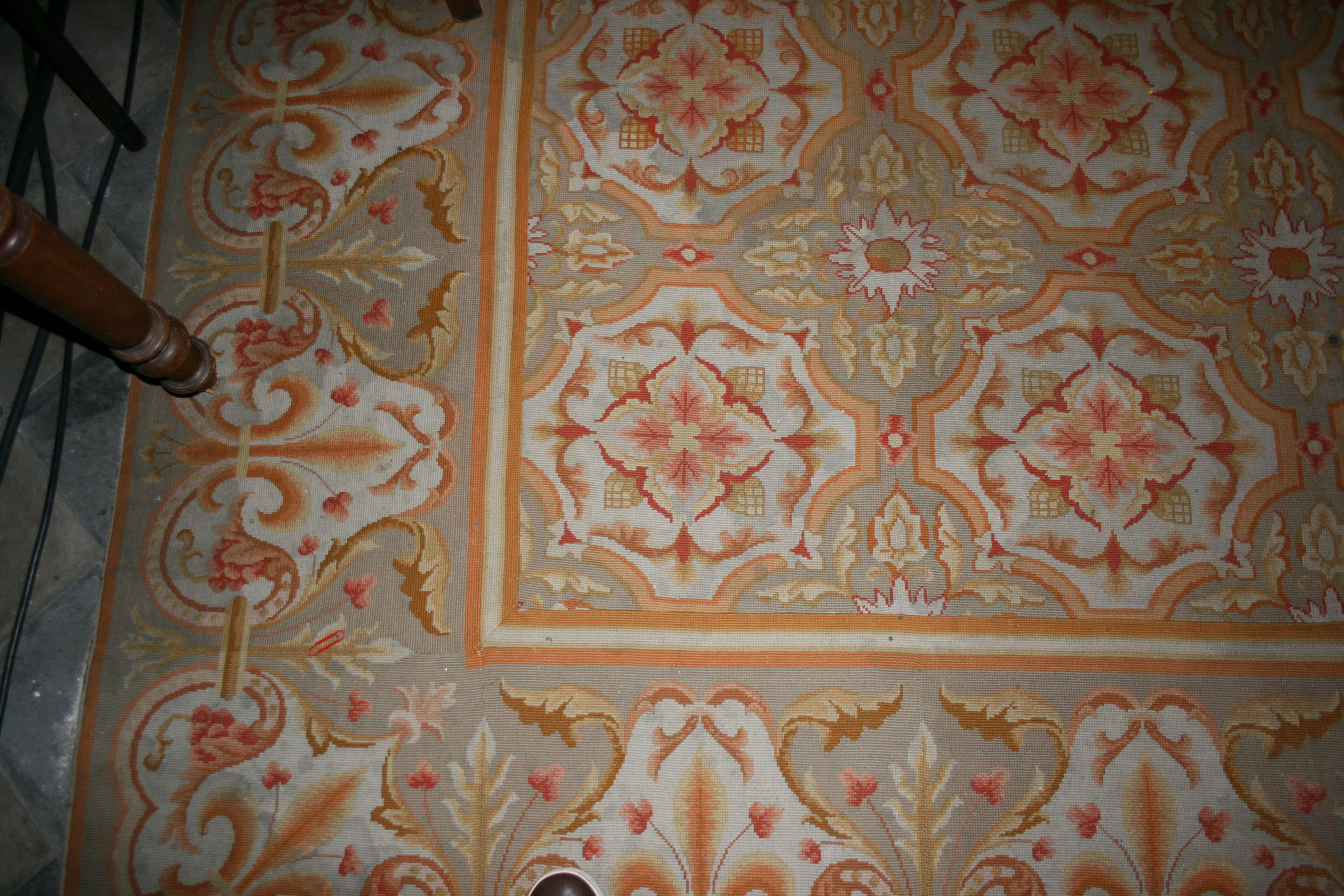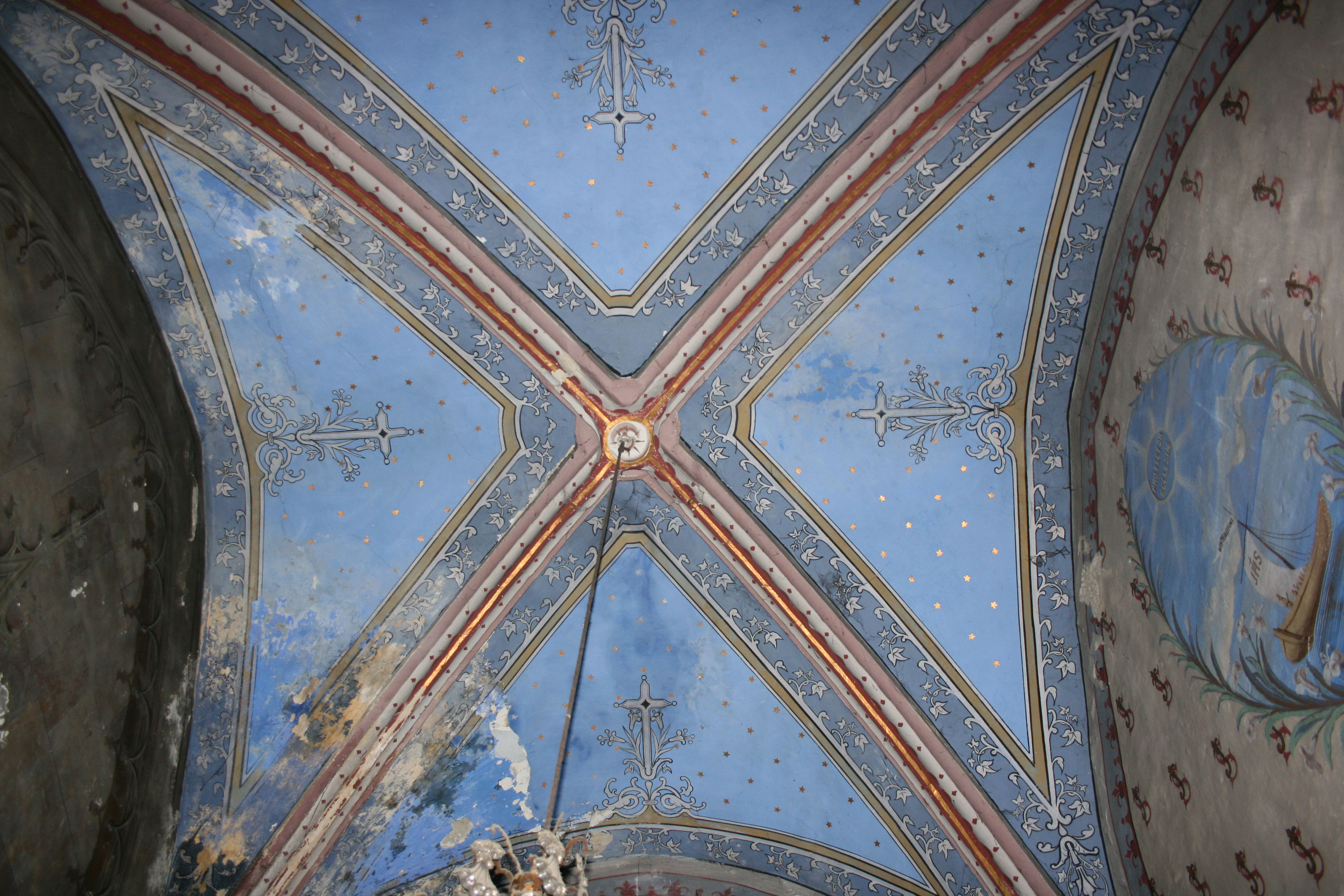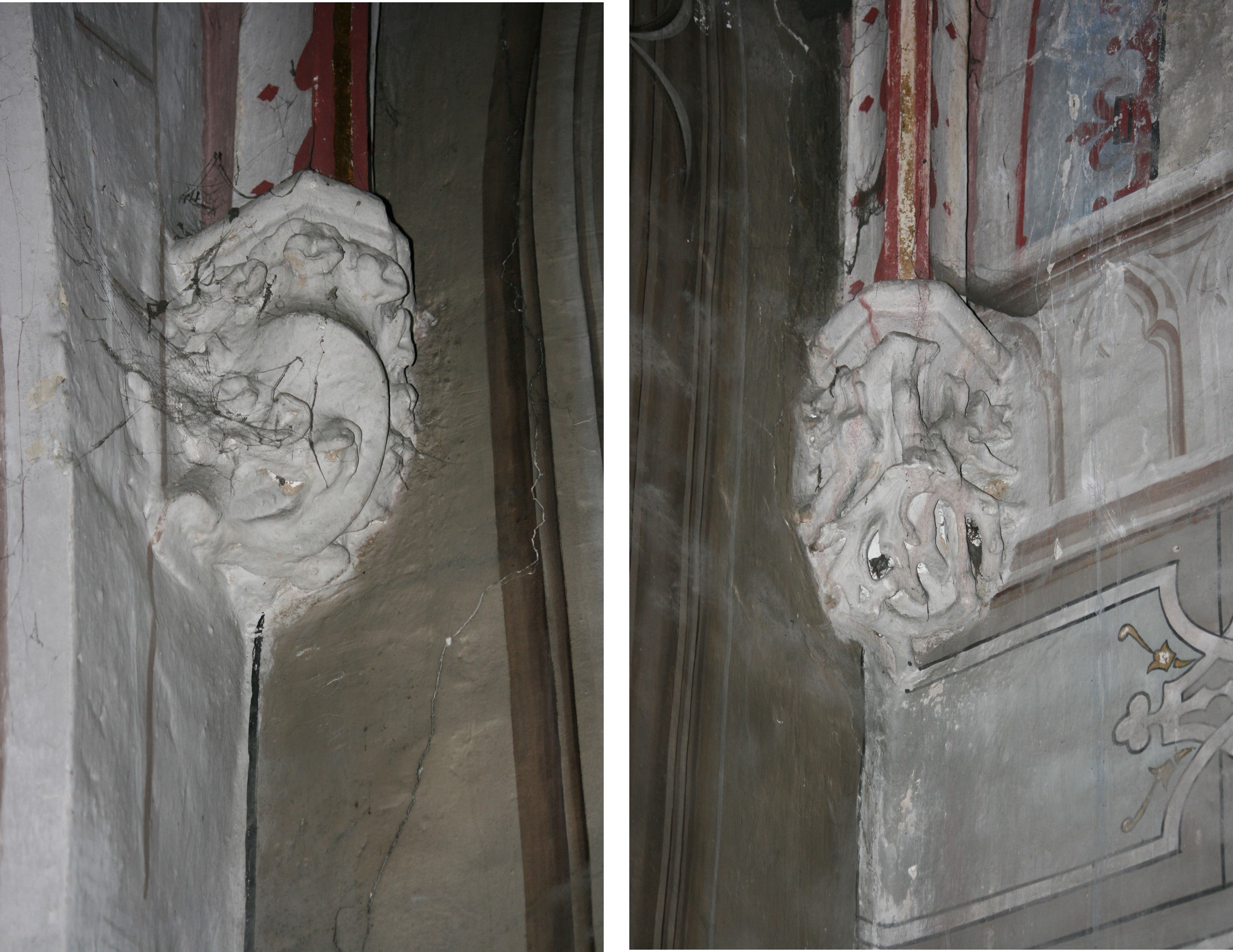The two-pane stained glass window with non-figurative motifs was probably made by Gubian and Roy-jeune, master glassmakers in Lyon in 1866. The detail at the top of the window confirms the chapel's devotion to Saint Joseph (cf. 14 and 15).
Opposite the altar, a medallion painting depicts Jesus on Lake Tiberias (cf. 16).
The boat's sail bears the letters "JHS", an imperfect translation of Christ's Greek initials "IHS". The banner bears the motto "non prevalebunt", literally meaning "they shall not prevail". It seems to refer to the biblical phrase spoken by Jesus: "And I tell you that you are Peter, and on this rock I will build my church, and the gates of Hades shall not prevail against it". (cf. 17)
